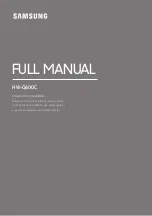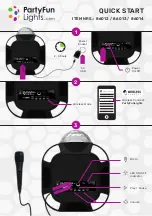
12
www.strata.co.nz
EZIARC 160 • EZIARC200
Lap Joint (Fig 1-19e)
Fillet Joint (Fig 1-19f)
Corner Weld
(Fig 1-19g)
Tee Joints
(Fig 1-19h)
Edge Joint
(Fig 1-19i)
Plug Welds
(Fig 1-19j)
MMA Welding Techniques
A Word for Beginners
For those who have not yet done any welding, the
simplest way to commence is to run beads on a piece
of scrap plate. Use mild steel plate about 6.0mm thick
and a 3.2mm electrode.
Clean any paint, loose scale or grease off the plate
and set it firmly on the work bench so that welding
can be carried out in the down hand position. Make
sure that the Work Lead/Clamp is making good elec-
trical contact with the work, either directly or through
the work table. For light gauge material, always clamp
the work lead directly to the job, otherwise a poor cir-
cuit will probably result.
The Welder
Place yourself in a comfortable position before begin-
ning to weld. Get a seat of suitable height and do as
much work as possible sitting down. Don’t hold your
body tense. A taut attitude of mind and a tensed body
will soon make you feel tired. Relax and you will find
that the job becomes much easier. You can add much
to your peace of mind by wearing a leather apron and
gauntlets. You won’t be worrying then about being
burnt or sparks setting alight to your clothes.
Place the work so that the direction of welding is
across, rather than to or from, your body. The elec-
trode holder lead should be clear of any obstruction
so that you can move your arm freely along as the
electrode burns down. If the lead is slung over your
shoulder, it allows greater freedom of movement and
takes a lot of weight off your hand. Be sure the insula-
tion on your cable and electrode holder is not faulty;
otherwise you are risking an electric shock.
Striking the Arc
Practice this on a piece of scrap plate before going on
to more exacting work. You may at first experience
difficulty due to the tip of the electrode “sticking” to
the work piece. This is caused by making too heavy
a contact with the work and failing to withdraw the
electrode quickly enough. A low amperage will accen-
tuate it. This freezing-on of the tip may be overcome










































